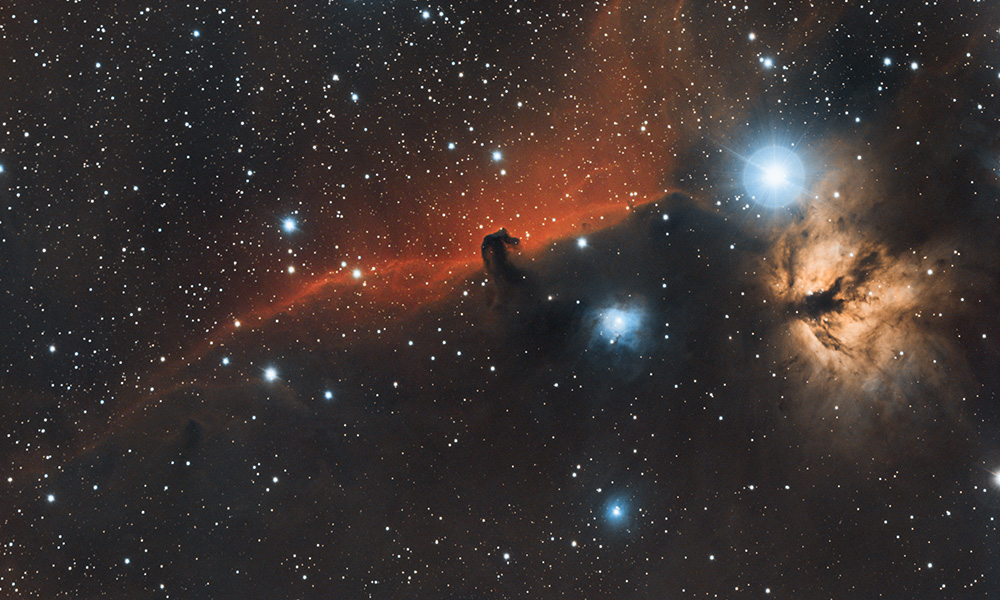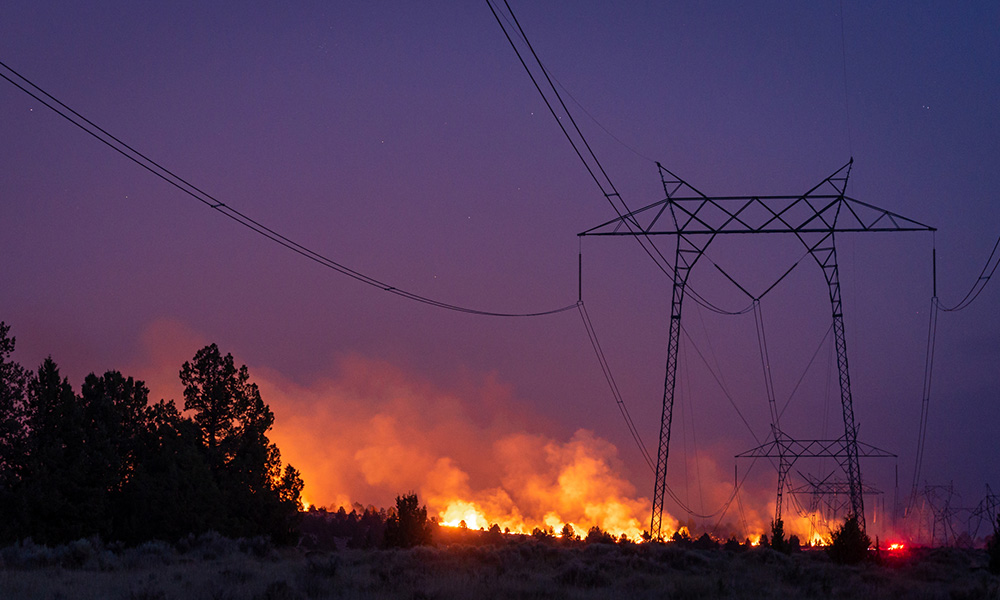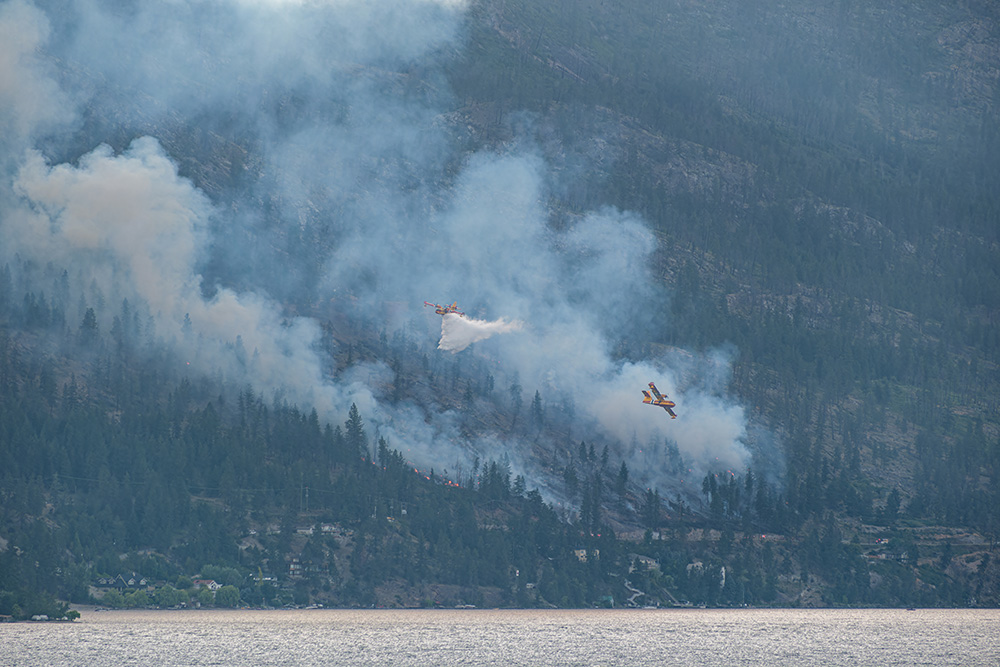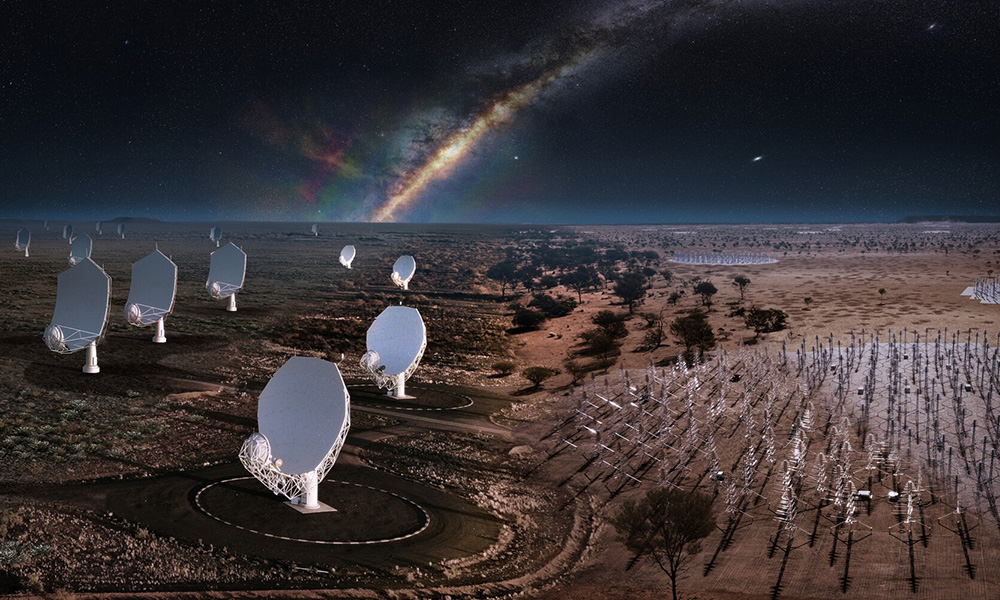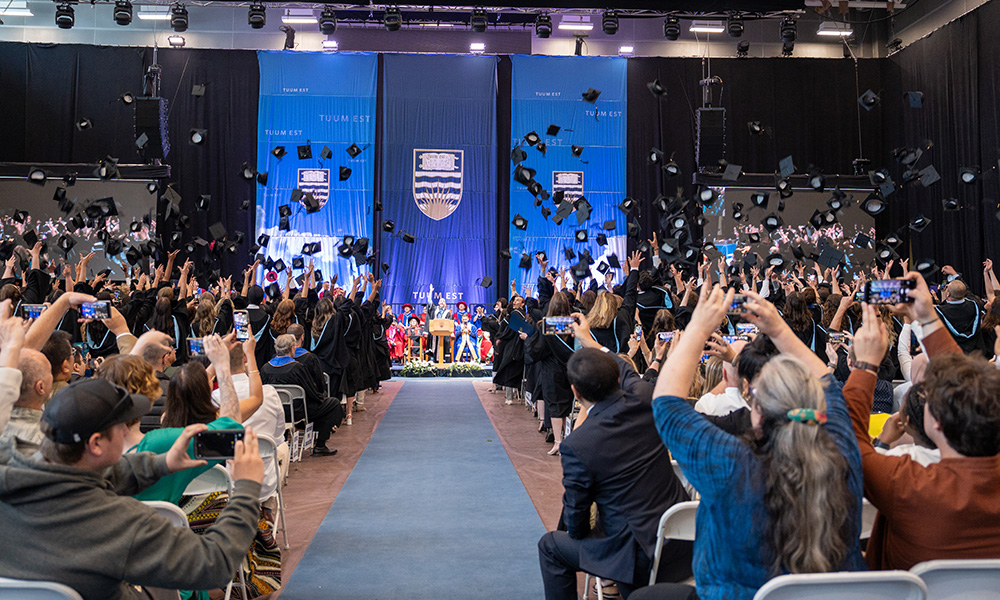
Graduates toss their caps as their ceremony comes to a conclusion at one of three graduation ceremonies at UBCO Thursday.
When Liam Krebbers crossed the stage to receive his degree at UBC Okanagan’s final graduation ceremony today, it was a brand-new experience for him.
Like many of his classmates, Krebbers graduated high school in June 2020 at the height of the COVID-19 pandemic. It was a time of isolation, protective masks and cancelled or modified celebrations.
“I graduated high school during the time of online and physically distanced ceremonies,” says Krebbers. “I walked across the stage in a nearly empty arena, 15 minutes apart from my friends. I’m very excited this year to be part of an actual graduation ceremony and I’m looking forward to graduating with all my friends.”
Krebbers was one of 2,400 graduates celebrated Thursday and Friday at UBCO—the largest number of graduating students since the university campus was established in 2005.
For many students, notes Dr. Lesley Cormack, UBCO’s Principal and Deputy Vice-Chancellor, it was their first opportunity to cross that stage in front of a jam-packed audience.
“We are incredibly excited to celebrate graduation every year, but this year is particularly meaningful as many of the students graduating did not have a traditional high school graduation due to the pandemic,” says Dr. Cormack. “Ceremonies like graduation provide opportunities for connection, signify our collective values and allow us to come together to celebrate the hard work that has gone into obtaining a UBC degree.”
Along with conferring more than 2,400 doctoral, master’s and undergraduate degrees, UBCO celebrated a number of top academic awards, teaching excellence awards and the conferring of seven Bachelor of Nsyilxcn Language Fluency (BNFL) degrees. This is the second cohort of students to graduate from the BNLF program, the first being last year after the degree program was introduced in accordance with UBC’s commitment to truth and reconciliation.
During graduation, UBCO also celebrated three people who have been instrumental in the growth of the campus and the community with honorary degrees.
Dr. Deborah Buszard, who served as Interim UBC President from 2022 to 2023, and UBCO’s Principal and Deputy Vice-Chancellor for eight years before that, was presented with a Doctor of Laws, honoris causa Thursday morning. Ian Cull, former UBCO Associate Vice-President, Students was also presented with a Doctor of Laws, honoris causa Thursday afternoon. Kelowna entrepreneur Ragwa Gopal, a leader in British Columbia’s tech and innovation community and founder of Accelerate Okanagan in 2012, was presented with a Doctor of Laws, honoris causa Friday morning.
Honorary degrees are awarded by universities to recognize people who have made substantial contributions to society at the provincial, national or international levels. Dr. Cormack noted all three honorary degree recipients have made a significant difference to the Okanagan region, the community and UBCO since it first opened 19 years ago.
In all, six ceremonies took place yesterday and today, and the students of 2024 were celebrated loudly and proudly by their families, fellow students as well as UBCO faculty and staff.
“I extend my heartfelt congratulations to the UBC Okanagan Class of 2024 for their hard work, perseverance and determination,” adds Dr. Cormack. “They are going out into a world as change makers and it desperately needs them. We are proud of them and can’t wait to see what they achieve.”
The post UBCO celebrates the Class of 2024 appeared first on UBC Okanagan News.

